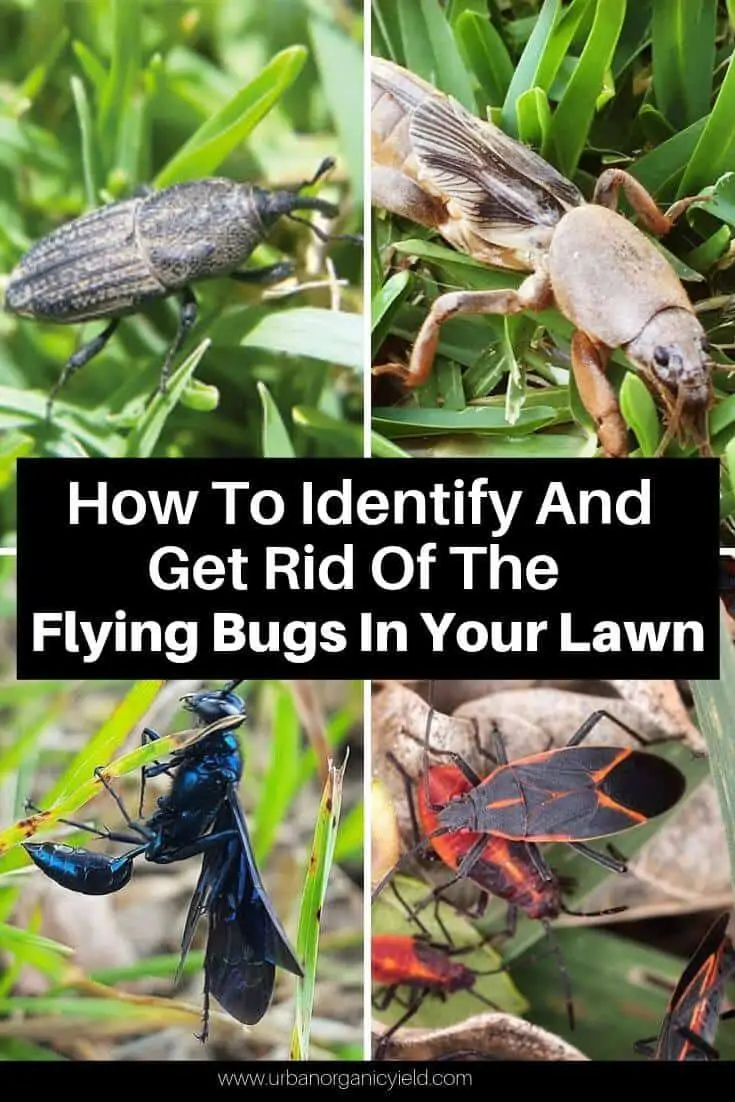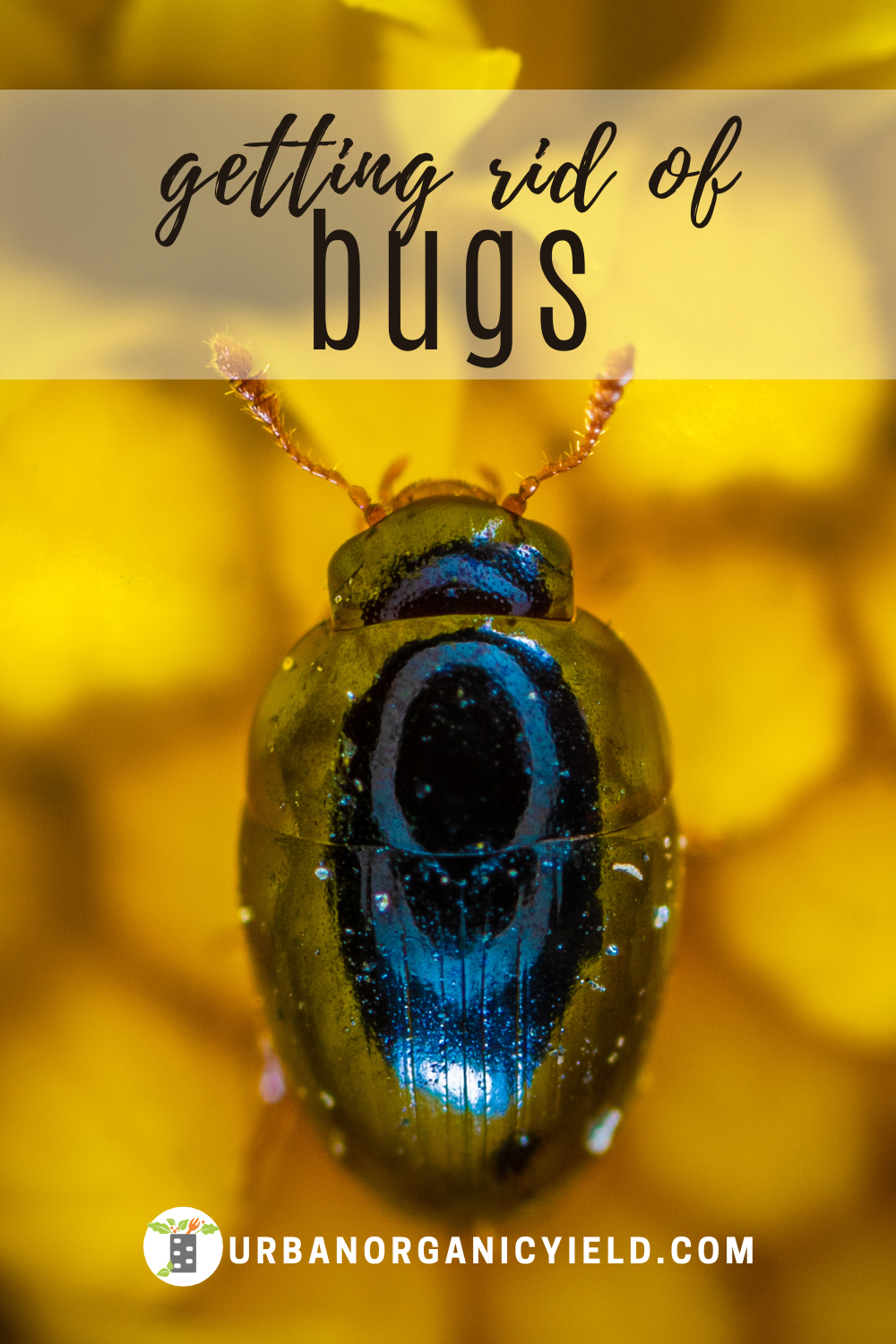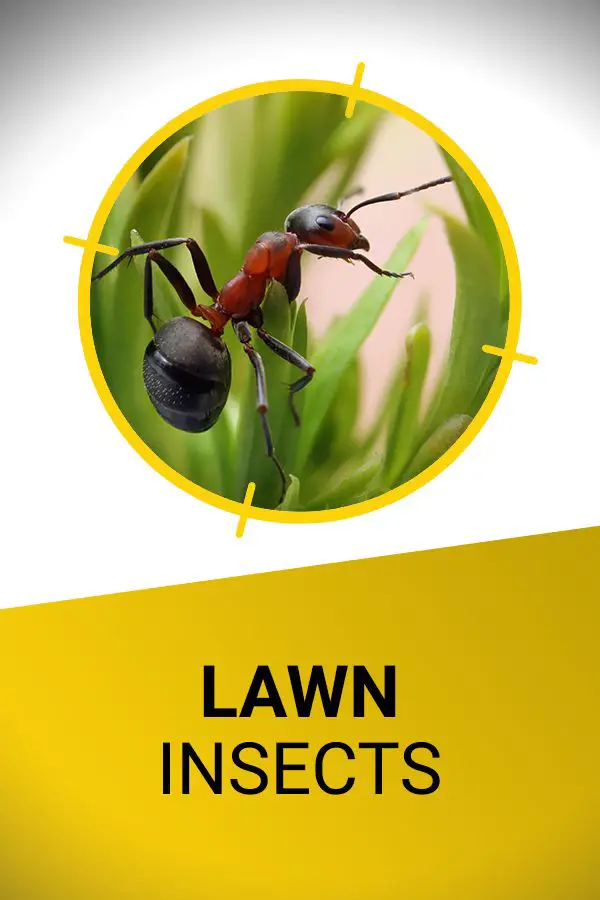What If Theyre In My House
Chinch bugs dont really infest the house unless theyre just stray and wandering around.
Typically, they can be tracked into the home if you have pets or kids walking on the lawn and then carrying them into your house. They wont naturally go into your home and infect it for no reason.
Theres no lawn there, and theres no thatch. Even if you have a ton of indoor plants, as long as theyre not grassy types, you should have no problem with chinch bugs in your home. Unless you have plants like cat grass or wheatgrass, you should have chinch bug problems.
Theyre likely just lost souls that someone found their way right into your home. Just eliminate them and be sure youre not tracking them in somehow. Also, check your kids and pets, and be sure to check the shoes, clothing, and anything else that can be used as a vessel for bug transportation.
Do June Bugs Eat Roses
The common June bug, Phyllophaga longispina, does not feed on roses. However, the Japanese beetle, Popillia japonica, can seriously disfigure roses as well as many other ornamental and edible plants. Japanese beetles also produce grubs in their juvenile phase, which can be controlled in much the same way as common white grubs.
Japanese grubs, unlike June bugs, are highly active during the day. A common method of control is to pick them by hand and drown them in a container of water.
Are Beetles Taking Over Your San Francisco Bay Area Home Were Here To Help
Do you have beetles in your home, yard, or garden? Our team is here to help. We provide high-quality, reliable pest control services for commercial and residential customers in Northern California from Marin to Monterey.
Dont play host to beetles for one more day call our team for fast, permanent beetle removal services.
Also Check: How To Clean A Carburetor On A Lawn Mower
Effective Lawn Pest Control
Lawn pest damage often goes unnoticed and unchecked until major damage occurs. Fortunately, you can quickly and efficiently control and prevent pests such as cutworms, armyworms, sod webworms, grubs, and chinch bugs with the help of GardenTech® Sevin® brand insecticides.
Sevin® Insect Killer Granules kill more than 100 insect pests by contact, working above and below the surface. This highly effective answer to lawn pest problems won’t harm plants, blooms or lawn when used as directed. Use it on fruit and vegetable gardens, ornamental and flower gardens, and around your home as well. Plus, it keeps killing insect pests and protecting for up to three months.
Sevin® Insect Killer in ready-to-use, ready-to-spray and concentrate liquid forms also treats more than 500 types of lawn and garden pests, including damaging moths and beetles. Tough on pests, but gentle on gardens, these liquid forms also work by contact and provide up to three months of continuing protection.
A pest-free lawn is a pleasant place for family and friends to gather and enjoy your outdoor spaces. Keep an eye out for these common turf nuisances and act promptly when they strike. With the help of GardenTech® brands and Sevin® garden insecticides, you can control common lawn pests and stop them in their tracks.
Home Remedies For Lawn Problems With Bugs

Bugs infesting your lawn leave your yard looking less than presentable. Their feeding negatively affects the health and aesthetic value of the turfgrass. Instead of turning to chemical pesticides to manage lawn problems associated with insects, consider home remedies that contain inexpensive household ingredients. Keep in mind, however, that the effectiveness of home remedies is usually not scientifically tested and the best control against lawn problems with bugs is to properly maintain the turfgrass.
Don’t Miss: How To Fix Dry Grass Patches
Attack Them At The Lawn Grub Phase
You’re relaxing with a drink on your porch when, all of a sudden, you’re hit by a large flying insect. You look down and see that the culprit was a beetlemore specifically, a June bug. These beetles are easily recognizable: 1/2- to 1-inch-long reddish-brown bugs with wings that form a hard shell when the insect isn’t in flight. The beetles themselves don’t do any harm to people, though the sticky legs can give you a shiver if the bug clings to you, and the sensation of stepping on one is decidedly unpleasant.
Harmless though the beetles are to people, it’s a different matter when it comes to a lawn or landscape. June bugs are the adult phase of the various species of insects in the Phyllophaga genus. The insect most associated with the common name of “June bug” is Phyllophaga longispina, although there are several other species also known by that name.
While the adult flying beetles do cause some damage to plants by feeding on the leaves and stems, the real problem lies in the immature larval phase of these insects. Known as white grubs, these larvae can wreak serious damage on the roots of lawn turfgrasses and other plants. In addition to P. longispina, a number of other common beetles produce white grubs in their larval stage, including Japanese beetles . Fortunately, all of these beetles can be handled in much the same way.
Spraying For Pests In Summer
Summer months bring more ants, flies, ticks, stinging insects, and mosquitoes. Its a good idea to spray in early summer months to help control these pests. Throughout summer, you can reapply spray as needed. Mosquitoes are especially active in the middle of summer. You can use a product designed for these pests like our Mosquito & Tick Killer. This can be applied to lawns and vegetation.
Read Also: How To Get Rid Of Violets
How To Get Rid Of Whiteclover In Grass
Because clover is so resilient, it can be tough to kill.Because of this, one natural way to rid your lawn of clover is to deprive it of these needs.By raising your mowing height and letting your grass grow a little taller, you block sunlight, which helps prevent clover from growing.Clover canât grow well in areas where there is good coverage.
Clover fixes nitrogen in the soil reducing the need to feed your lawn.Clover is a common weed in horse pastures.Clover is a weed that grows and spreads fast to cover any area that grass hasnât grown.Clover reproduces through seeds, aggressively spreading above and below ground root systems.
Corn meal gluten is a great, safe way to slowly prevent clover in your lawn.Cover areas of removed clover with topsoil.Cut the grass low and rake it a bit to thin it out and remove dead grass.Explains that white clover, a native plant, was an important food for indigenous americans.
First, household vinegar is only about 5% acetic acid, which means it may take a few applications to kill the clover.High in protein, vitamins and minerals, the sweet and fragrant young blooms were dried, crushed into flour and added to a variety of foods, including stews.How to get rid of clover.However, using organic fertilizer will lead to healthier growth in the long run.
Deploy An Exterior Barrier Treatment
If beetles are an annual problem in your home, use an exterior barrier treatment to kill them on contact. These treatments are available through your local home goods store. Spray the treatment around your doors, windows, foundation, and roofline to keep beetles from congregating and entering your space.
You May Like: Trugreen Cost Lawn Care
Best Way To Get Rid Of Crabgrass In Your Lawn : How To Remove A Tree Stump Painlessly
No matter how welcoming you are, nobody wants to share their home with household pests. Lawn grubs are beetle larvae that eat through your grass’ roots. It’s common to notice brown patches in your lawn during spring or early fall. It’s not uncommon to notice brown patches in your lawn during spring or early fall. In addition to having a master& aposs degree.
Keep Lawns Tidy And Trimmed
Tall grass and weeds can provide harborage for ticks, fleas and even ant hills. At the same time, overgrown shrubbery or tree branches that make contact with your home can act as entry points for cockroaches and other unwelcome houseguests. Mow your yard regularly during spring and summer months so that insects have less area in which to hide. Additionally, keep trees and shrubs trimmed, preferably by a professional, so theres about a foot of distance between the walls of the house and any branches. If you like climbing plants, such as ivy or wisteria, it may be a good idea to set up a trellis, so that vines dont act as gangplanks on which insects can march into your home.
Read Also: How To Get Rid Of Violets In Yard
Preventing Bugs In Lawn
No system of preventing lawn insect pests is foolproof, but a healthy, well-maintained lawn isnt as likely to attract insects as a neglected lawn. Follow these guidelines to help your lawn thrive:
- Water deeply but infrequently. Let the sprinkler run slowly as long as the water is sinking in rather than running off.
- Sprinkle grass seed in thin areas in spring and fall.
- Use a grass species known to grow well in your area. A local nursery can help you choose a good species for your area.
- Follow the instructions on your lawn fertilizer bag or the advice of a lawn care specialist to make sure that you apply enough fertilizer at the appropriate times.
- Aerate the lawn annually or when the thatch is deeper than one-half inch.
- Keep the lawnmower blades sharp and never remove more than one-third of the height of the grass when you mow.
Use Water And Dish Soap

While this is a manual approach, it can be effective. Heres how to do it:
Fill a quart jar with water and a squirt of dish soap and hold it under the branches of plants where beetles are resting. Tap the branches. The beetles will fall into the jar and the dish soap will smother them.
Pros: Effective, kills beetles fast, non-toxic
Cons: Labor-intensive, may take a long time to kill all the beetles in your yard
Don’t Miss: Killing Wild Violet
Lawn Pest Control 101 Learn How To Get Rid Of Lawn Pests
A lush green lawn requires a lot of attention, energy and of course monetary investment from the home owner. Looking after the garden lawn is a continuous process the work doesnt stop when the thick grass has covered your outdoor area. You have to be on the constant lookout for lawn pests and bugs which could damage the effort you have been putting in for months.
There are numerous species and kinds of bugs and tiny pests that have the potential of turning a grassy green patch and luscious blooms into withered yellow patch and dead leaves hanging on stems. If you dont want your effort to go to waste, then follow these simple steps to get rid of common lawn pests that generally plague gardens.
The first step towards ridding your lawn of pests is the identification of pests. The bugs and insects that normally plague the grass blades and surrounding flowering plants are very tiny and often go unnoticed. The first and most common sign indicating that there is a possibility of pest infestation in your garden is a withered or yellowish patch in your grass or perhaps in your bed of flowers.
There are a couple of methods of bringing in these beneficial bugs into your garden. You can either attract them from the afar by planting plants as oregano, daisies, thyme, fennel, zinnias, dill and sunflowers or you can actually purchase live ones from garden shops or online bug stores.
Products Needed For Step 1c
Apply Your Insecticide
Apply your insecticide across your entire lawn. If using a liquid insecticide, broadcast spray all of your lawn turf, starting from the edges of your lawn and working your way in.
If using a granular insecticide, walk the entirety of your turf with your spreader. Be sure to double back to your starting point to make sure you treat all grass.
You may need to water your granular insecticide after application. Read the label of your insecticide to determine if water is needed.
Watch the video below for more information on using insecticide on chinch bugs.
Recommended Reading: My Grass Is Dying In Patches
Apply A Curative Insecticide In September
Although it’s always better to avoid chemical insecticides if possible, a serious grub and June bug infestation is one case in which insecticides may be necessary if you want to save your lawn. The most effective chemical remedy is to apply a product that contains carbaryl or trichlorfon in September. These are contact chemicals that will kill grubs and prevent them from pupating into adults. And, in September, the grubs are still close enough to the surface to be killed by the insecticide.
These are known as curative chemicals rather than preventative since they will kill the insects in all their life cycle phases. Applied in September, these insecticides will kill as many as 80 percent of the grubs, thereby greatly reducing the following year’s June bug emergence.
Make sure to water in these chemicals thoroughly. Toxicity to humans and most animals is moderate but well documented. Carbaryl is toxic to fish, so avoid applying it where run-off to lakes and rivers is possible. Trichlorfon in large concentrations is a central nervous system stimulant and should be used cautiously. Immediate watering will remove the chemical from the surface and reduce the hazard.
What Are The Damages
Left unchecked, ants can upset the roots of plants, cause deep holes in the lawn, or find their way into your house. Long-term control of ants can only be achieved by destroying the nest and the queen. Ants generally feed on a variety of small insects , plant nectar, or honey dew caused by weeping plants.
Recommended Reading: How Often Can You Apply Fertilizer To Your Lawn
What Do They Do To Grass
Chinch bugs will eat up your grass so that it looks like patches of yellow grass. You may see bare spots, yellowing, or browning foliage. Especially if the grass is weedy and tall and offers them plenty of hiding places to munch without being disturbed.
They like to hide where they wont be seen so theyre safe from predators.
If youve ever seen your lawn in a drought, damage to it forms these pests look very similar.
Drought damage can be differentiated from chinch bugs as drought damage leaves an evenly damaged, brownish grassed area. Chinch bugs will leave mottled gross in patches or clumps unevenly with lines of undamaged grass between each patch.
Youll often notice this around lawn edges, foundations, driveways, streets, bricks, housing, and other buildings. Take a good look at the grass for the presence of these pests and also look for their nymphs. Theyre easy to spot because theyre bright pink/red with a stripe thats white.
You can also use a tool to dig around in the area where you suspect them to be and see if any of the bugs grab onto the tool. You can also wear some garden gloves and look at the grassroots for any chinch bugs present.
How To Get Rid Of White Clover In Grass Ideas
How To Get Rid Of White Clover In Grass. Adding clover seed to the bluegrass seed improved forage quality and extended the grazing season for livestock. Adios, an organic weed killer, will weaken and kill the clover in your lawn without harming any of your grass.
Again watch out to not add too much clover. All strands of clover have three leaflets and a long stalk.
You May Like: Does Lowes Rent Riding Lawn Mowers
Effective Lawn Bug Control
Lawn damage from pests can go unchecked and unnoticed until its too late and major damage has all but ruined your lawn. You can efficiently and quickly control the situation and prevent these bugs with a reputable name brand lawn care product. Even better, hire lawn care experts of Summit Turf Services to help control the lawn bugs and keep your yard safe and beautiful.
Light Up Some Citronella

Citronella oil comes from a combination of naturally bug-repellent grasses. In candle form, it masks the scents of carbon dioxide and human lactic acid, which are so attractive to insects. And it’s perfectly safe too! Approved by the FDA, citronella has been used to flavor foods and beverages for more than 50 years. So, get the tutorial for citronella candles, and light them up at your next backyard party for a bug-free gathering.
You May Like: Where Can I Trade In My Riding Lawn Mower
How Do I Get Rid Of Small Bugs In My Lawn
theyardlawnbugsgrassthe
How to Get Rid of Small Flying Insects in the Lawn
what are the little white bugs in the grass? What are those little white flying bugs on your plants? Whiteflies, also known as aleyrodidae, are soft-bodied, winged insects closely related to aphids and mealybugs. They can be found in most any region, but they are so tiny that they are usually camouflaged.
Similarly, it is asked, what are the little bugs in the grass?
Lawn gnats, called fungus gnats, are small, mosquito-like insects often observed hovering over grass in big swarms. The pests develop in damp soils and decaying plant material, and populations soar during stretches of hot, rainy weather.
How do I get rid of the flies in my yard?
Steps
